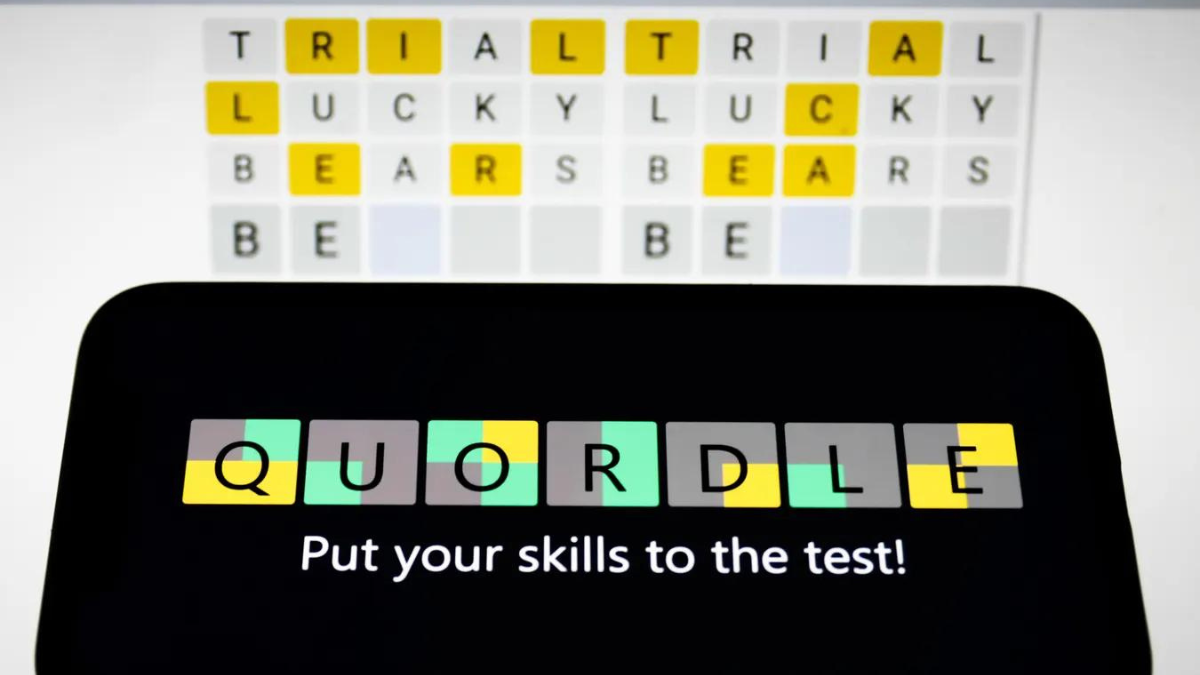In the vast landscape of word puzzle games, quordle hints stands out as a unique and captivating challenge for players of all ages. Created by Gav Drumm, Quordle combines elements of logic, deduction, and vocabulary prowess into an addictive gaming experience. With its simple yet challenging gameplay, Quordle has quickly gained popularity among puzzle enthusiasts worldwide.
At its core, Quordle is a game of deduction and vocabulary. Players are presented with a 4×4 grid of letters, and their task is to guess the hidden word that the grid represents. With each guess, players receive feedback in the form of colored tiles, indicating the accuracy of their guess. Green tiles signify correct letters in the correct position, yellow tiles represent correct letters in the wrong position, and gray tiles indicate incorrect letters.
Understanding the Quordle Gameplay
To excel at Quordle, players must familiarize themselves with the game’s rules and mechanics. Each puzzle presents a unique combination of letters, requiring players to carefully analyze the available information and make educated guesses. While there are no strict time limits in Quordle, efficient decision-making is crucial for achieving high scores and completing puzzles in a timely manner.
Breaking down the grid is essential for deciphering Quordle puzzles. By systematically eliminating possibilities and identifying patterns, players can narrow down the potential words and make more accurate guesses. Additionally, understanding the nuances of the hint system – including letter hints, color hints, and position hints – can provide valuable insights into the puzzle’s solution.
Deciphering Quordle Hints
One of the key aspects of mastering Quordle is learning how to interpret and utilize the hints provided in each puzzle. Quordle offers three types of hints: letter hints, color hints, and position hints. Letter hints reveal which letters are present in the hidden word but do not indicate their positions. Color hints provide feedback on the accuracy of the player’s guess, with green indicating correct letters in the correct position, yellow representing correct letters in the wrong position, and gray signaling incorrect letters. Position hints reveal the position of specific letters within the hidden word.
Interpreting these hints requires a combination of logic, deduction, and vocabulary knowledge. Players must carefully analyze the feedback provided by each hint and use it to refine their guesses. For example, if a guess results in several green tiles, players can deduce that those letters are correct and in the correct positions. Conversely, if a guess yields mostly gray tiles, players can eliminate those letters from future guesses.
Advanced Techniques for Quordle Mastery
While Quordle is accessible to players of all skill levels, mastering the game requires practice, strategy, and a deep understanding of word patterns and structures. Advanced players often employ techniques such as pattern recognition, letter frequency analysis, and logical deduction to solve puzzles efficiently.
Pattern recognition involves identifying common word structures and letter combinations within the grid. By recognizing recurring patterns, players can make educated guesses and narrow down the possible words. For example, if a puzzle contains the letters “S,” “T,” “R,” and “E” in consecutive positions, players might deduce that the hidden word is “STREET.”
Additionally, analyzing letter frequencies can provide valuable insights into the most likely letters to appear in the hidden word. In the English language, certain letters – such as “E,” “T,” and “A” – are more common than others. By prioritizing these high-frequency letters in their guesses, players can increase their chances of success.
Logical deduction plays a crucial role in Quordle solving, allowing players to eliminate unlikely possibilities and focus their efforts on more promising avenues. For example, if a guess results in several gray tiles, players can use this information to rule out certain letters from future guesses. Similarly, if a guess yields multiple green tiles in specific positions, players can deduce the correct placement of those letters and adjust their strategy accordingly.
By combining these advanced techniques with strategic thinking and vocabulary prowess, players can achieve mastery in Quordle and consistently achieve high scores.
Strategies for Optimal Guessing
In Quordle, making educated guesses is essential for success. While there is an element of randomness to the game, strategic guessing can significantly improve a player’s chances of solving puzzles efficiently. Here are some strategies for making optimal guesses in Quordle:
Prioritize High-Frequency Letters: In the English language, certain letters – such as “E,” “T,” and “A” – are more common than others. When making guesses in Quordle, prioritize these high-frequency letters, as they are more likely to appear in the hidden word.
Maximize Information Gain: With each guess, aim to maximize the information gained from the feedback provided. Pay close attention to the color hints, as they can reveal valuable insights into the accuracy of your guess. Use this information to refine your guesses and narrow down the possibilities.



